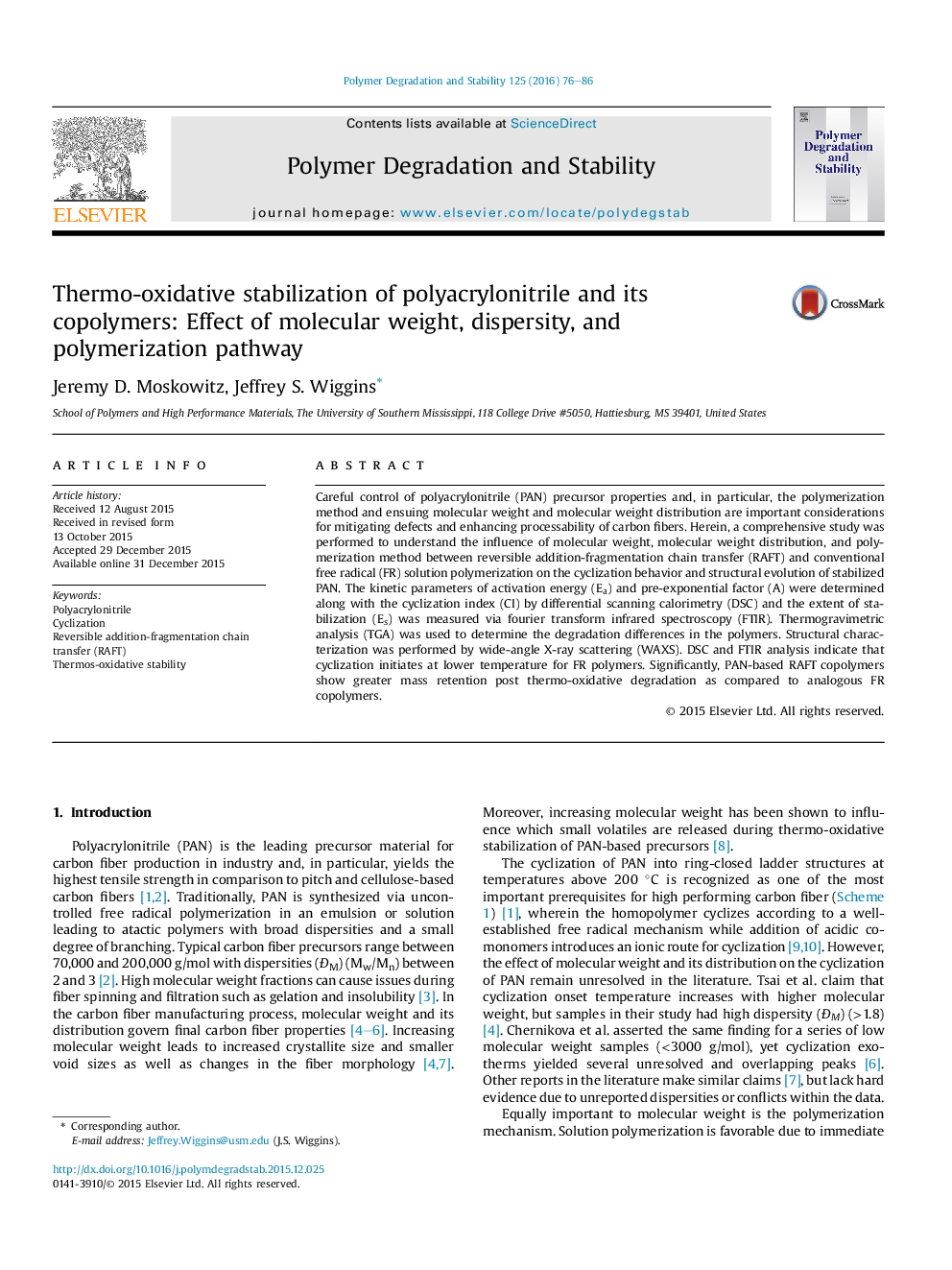| Article ID | Journal | Published Year | Pages | File Type |
|---|---|---|---|---|
| 5201148 | Polymer Degradation and Stability | 2016 | 11 Pages |
Careful control of polyacrylonitrile (PAN) precursor properties and, in particular, the polymerization method and ensuing molecular weight and molecular weight distribution are important considerations for mitigating defects and enhancing processability of carbon fibers. Herein, a comprehensive study was performed to understand the influence of molecular weight, molecular weight distribution, and polymerization method between reversible addition-fragmentation chain transfer (RAFT) and conventional free radical (FR) solution polymerization on the cyclization behavior and structural evolution of stabilized PAN. The kinetic parameters of activation energy (Ea) and pre-exponential factor (A) were determined along with the cyclization index (CI) by differential scanning calorimetry (DSC) and the extent of stabilization (Es) was measured via fourier transform infrared spectroscopy (FTIR). Thermogravimetric analysis (TGA) was used to determine the degradation differences in the polymers. Structural characterization was performed by wide-angle X-ray scattering (WAXS). DSC and FTIR analysis indicate that cyclization initiates at lower temperature for FR polymers. Significantly, PAN-based RAFT copolymers show greater mass retention post thermo-oxidative degradation as compared to analogous FR copolymers.
